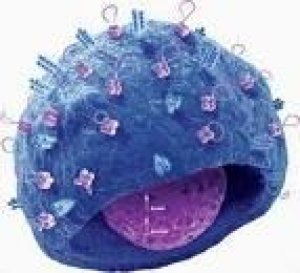
All iLive content is medically reviewed or fact checked to ensure as much factual accuracy as possible.
We have strict sourcing guidelines and only link to reputable media sites, academic research institutions and, whenever possible, medically peer reviewed studies. Note that the numbers in parentheses ([1], [2], etc.) are clickable links to these studies.
If you feel that any of our content is inaccurate, out-of-date, or otherwise questionable, please select it and press Ctrl + Enter.
Scientists develop a method that detects diseased tissue using sounding liposomes
Last reviewed: 30.06.2025
 ">
">Doctors may soon be able to hear more than just wheezing in the lungs: British scientists are developing a method that will allow them to detect diseased tissue in the body using sounding liposomes.
Researchers at the University of Nottingham are working on a very innovative method that will in the future allow us to track the movement of drugs in our bodies and with the help of which it will be possible to accurately determine the location of a disease - for example, inflammation or a cancerous tumor. Until now, when we take a medicine, neither we nor doctors know exactly how it is distributed throughout the body. Accordingly, many diagnostic methods are also inaccurate; it is difficult to recognize, for example, a cancer metastasis in time without laborious and sometimes painful for the patient analysis methods. All problems of this kind can be solved in one fell swoop, the researchers believe, if we literally make the human body talk.
The scientists' method is based on liposomal vesicles - membrane bubbles separated from the environment by a double layer of lipid molecules. These structures are already used in modern biology and medicine to facilitate the delivery of drugs and other substances to living cells. But in this case, the researchers propose monitoring the travels of liposomes throughout the body using special microphones.
Microphones must capture the sound vibrations emitted by liposomes. But how will these membrane bubbles acquire a voice? To do this, scientists want to use a technique used in magnetic resonance imaging. The molecules that make up the membrane shell are folded in it asymmetrically, due to which the liposome has its own electric charge. Therefore, in the presence of an electromagnetic field, this charge will make the molecular complex vibrate - like a diffuser in a loudspeaker. The resulting sound waves will be captured by the microphone.
In order for the signal to be clear enough, the researchers plan, on the one hand, to increase the asymmetry of the liposome membranes so that they "speak" louder, and on the other hand, to work on the sensitivity of the microphone (it is clear that the sound-receiving device in this case must be super-sensitive). The authors see the future of the method as follows. The liposome is supplied with some molecule that will allow it to pick up the trail of, say, a cancerous tumor, after which it is launched into the body. After many liposomes have detected a cancerous lesion, their voice in the electromagnetic field becomes more or less audible. In the same way, it is possible to monitor, for example, the journey of some medicine, its distribution throughout the body. In a sense, this is similar to how a woodpecker searches for insects under the bark of a tree - by the sound of their scurrying.
 [ 1 ], [ 2 ], [ 3 ], [ 4 ], [ 5 ], [ 6 ], [ 7 ], [ 8 ], [ 9 ], [ 10 ]
[ 1 ], [ 2 ], [ 3 ], [ 4 ], [ 5 ], [ 6 ], [ 7 ], [ 8 ], [ 9 ], [ 10 ]
